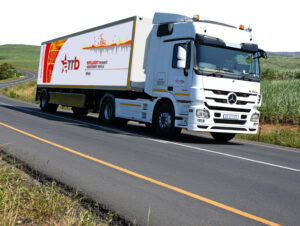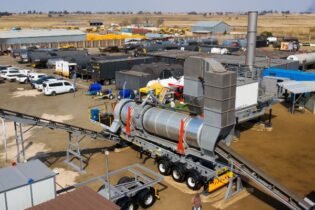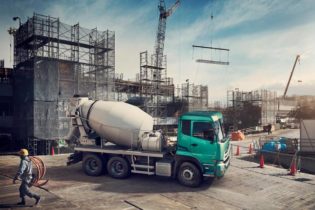Compared to manual and semi-autonomous processes, fully automated road assessment methodologies achieve the best results. IMIESA speaks to Simon Tetley, director at ARRB Systems, about how the company’s latest technologies prove beneficial for infrastructure investors.
What role does road condition assessment data play in optimising lifecycle costs?
ST Network level road condition surveys are an integral aspect of road asset management systems (RAMS) and have been systematically carried out in South Africa since the mid-1980s. The information collected at network and project levels has a direct impact on the lifetime cost of a road structure. As such, it is absolutely critical that the data collected is correct and, what is more, consistently rated in subsequent assessments. Errors in the evaluation of the road condition and the mechanisms of distress will lead to either the underdesign of remedial interventions, with resultant premature failure, or an overly robust design with associated wasteful expenditure in additional design and construction costs.When it comes to inspection methodologies, is automation now the preferred approach?
In most parts of the world, road inspection methodologies are automated to some degree. In South Africa, however, the acquisition of road network and project level condition data is dependent on undertaking physical visual assessments. These manual condition assessments require experienced and skilled human resources; they are also dangerous, stressful, time consuming and relatively expensive, with the production of approximately 60-80 km/day in a rural environment and around 20 km/day for urban roads. The key problem with a reliance on physical visual surveys is that the recorded condition of the road will obviously be influenced by a certain amount of subjectivity, which is clearly a problem.What aspects are measured in a semi-automated method?
A semi-automated network assessment typically consists of measuring surface characteristics using a network surveillance vehicle (NSV) equipped with laser profilers to evaluate riding quality, texture and rut depth, together with high-definition digital imaging to record road surface distress for geometry measurement and post rating of visual condition in terms of TMH9. More up-to-date NSVs are fitted with a laser crack management system (LCMS) for crack detection and classification in terms of crack type, severity and extent. In addition to the measurement of the road surface characteristics, an evaluation of the structural integrity of the road network is typically carried out in a semi-automated methodology using a falling weight deflectometer (FWD). These machines have been in use in South Africa for around 40 years and, while providing meaningful input for project level pavement design, are not ideally suited to the collection of network level structural measurement due to the limited productivity of approximately 65 lane km/day. Added to this is the fact that the measurement is done at a stationary position, requiring formal and well-managed traffic control.Do we have the technology to undertake fully automated pavement assessments?
Technology is readily available in South Africa to collect fully automated functional and structural road condition by using a traffic speed deflectometer device (TSDD)/rolling weight deflectometer (RWD)/intelligent Pavement Assessment Vehicle (iPAVe). These vehicles enable continuous, synchronised and integrated surface and structural measurements to be undertaken in a single pass at up to 80 km/h. TSDD testing enables us to calculate pavement deflections using measured horizontal travelling velocity and vertical surface displacement velocity. This provides a far more realistic measurement of the visco-elastic pavement response imposed by rolling tyre motion on the road surface. This cannot be achieved with FWD, which creates a purely elastic response. There are 19 such TSDD vehicles worldwide, with three of these being in South Africa – one operated by Sanral and the other two, namely the iPAVe, being operated by ARRB Systems.The iPAVe offers a fully automated and integrated ‘one-stop-shop’ option that generates all the information required by a RAMS (and HDM-4) at a much-improved production rate, lower overall cost, and at a significantly reduced risk when compared to traditional methods.
The improvements in safety are self-evident, as is the significant increase in production capability. Depending on network characteristics, the iPAVe TSDD is capable of collecting approximately 70 000 lane km of surface and structural condition data annually. While an FWD typically tests at 200 m intervals for network level surveys, the iPAVe is providing continuous measurement, which can be delimited at any interval from 25 mm upward. At a 5 m spacing, for example, the iPAVe could measure 14 million deflection points per year compared to 50 000 for the FWD at a 200 m spacing.What are the proven life-cycle cost benefits?
In addition to the data/metre cost benefit, we have carried out a study into the asset life-cycle benefit of utilising automated road condition evaluation versus manual and semi-automated methods (visual assessment only and NSV/FWD combination). The study culminated in a paper that was published for the proceedings of the 2021 IRF World Congress in Dubai. The aim of this study was to determine the life-cycle costs to a roads agency when making use of different road condition assessment methods – i.e. basic manual visual assessment, semi-automated data collection, and fully automated evaluation. An HDM-4 economic analysis was carried out to define the network, work standards and strategic analysis for each of the three scenarios, and to quantify the capital and recurring cost over a 20-year analysis period for the simulated road network. Using the maximisation of net present value function in the HDM-4 strategic analysis model, the most cost-effective set of maintenance and improvement standards over the analysis period was identified. Based on this analysis, thereis a R13 400 cost benefit per kilometre in
using iPAVe/TSDD when compared to the
NSV/FWD combination. If this is applied to the entire South African paved road network, a saving of over R2 billion would be achieved over a 20-year analysis period. When compared to the manual visual evaluation method, the saving increases to almost R19 billion. This study has shown that increasing the quality and accuracy of road condition data does result in a significant cost saving to the road authority, the road user and most importantly to the national fiscus.
Given the advantages, why are industry and road authorities reluctant to go to full automation in South Africa?
It is difficult to say why this is. Two provincial road authorities are using iPAVe/TSDD for network level condition data collection with significant productivity increases and cost reductions in terms of data provision. Our own national roads agency, Sanral, is also using its vehicle to collect functional and structural measurements on national roads. Our iPAVe has also been used at a project level by a few consultants on metropolitan and Sanral projects, but it is clear that many consulting firms and road authorities are reluctant to even explore this technology at either a network or project level and would rather continue with the same methods that have been used in South Africa for over 30 years. It is also clear that there has been a certain amount of rumour-mongering happening over the past four or so years since the first private iPAVe was introduced. The main thrust of this intentional misinformation was that TSD measurements could not be compared to FWD data and, therefore, could not be used to evaluate a comparative improvement or deterioration at network level or to undertake pavement designs at project level. We have written several papers refuting both these assertions – the latest being published at the 2021 SATC Conference and also a presentation at the 2022 TRB Conference in the USA. It has also been put forward by some sections of our industry that state-of-the-art technology should not be used in a developing country and that this will cost jobs. This point of view is clearly incorrect. In terms of job losses, the people undertaking manual road condition assessments and semi-automated measurements are qualified technicians at least and often technologists or engineers. It is common knowledge that there is a shortage of trained and qualified engineering resources, particularly in the public sector, and – by automating the process of road condition assessment – these people can be freed up to undertake the engineering work they were trained to do. As for the view that developing countries shouldn’t use high technology, it is my view that both developing and developed countries should be utilising the latest technology in the management of their road networks, but perhaps even more so in developing countries where budgets are more constrained, meaning that it is essential to identify technically and economically appropriate remedial interventions ‘first time’. This will result either in additional funding being available to reduce maintenace backlogs or being able to redirect these savings to other more needy public sectors. Going forward, I am encouraged by the ever-increasing interest in automated road condition evaluation methods in our country and overseas. I am sure it is only a matter of time before full spectrum automation of road condition data collection will become the norm rather than exception.






